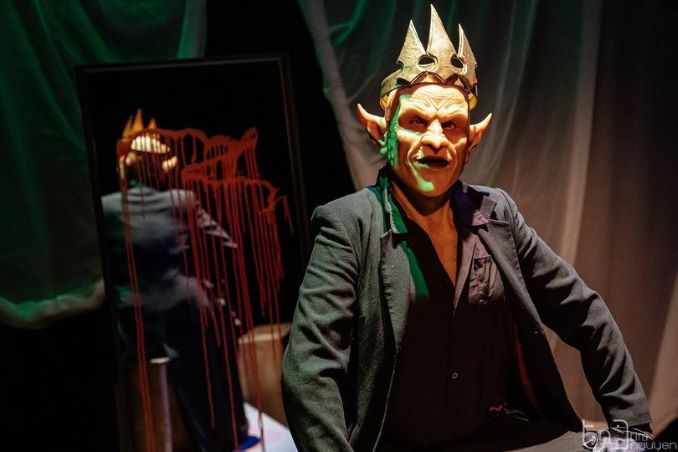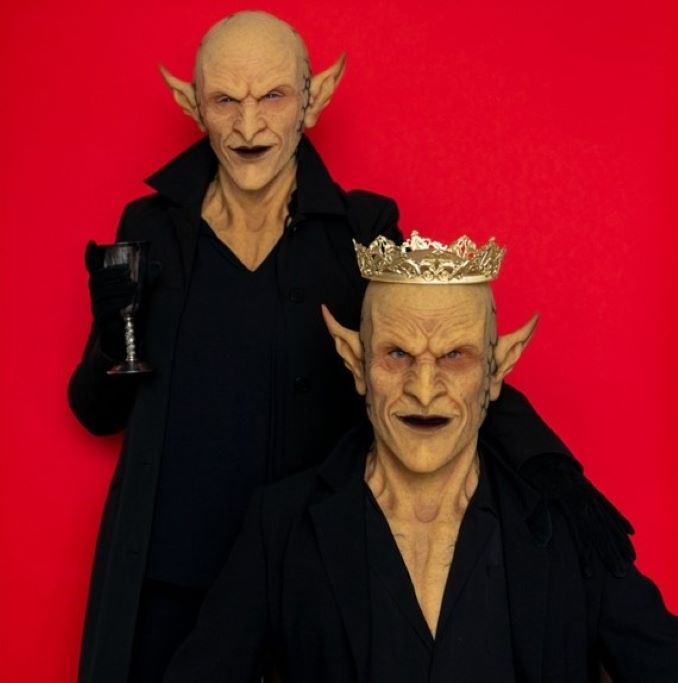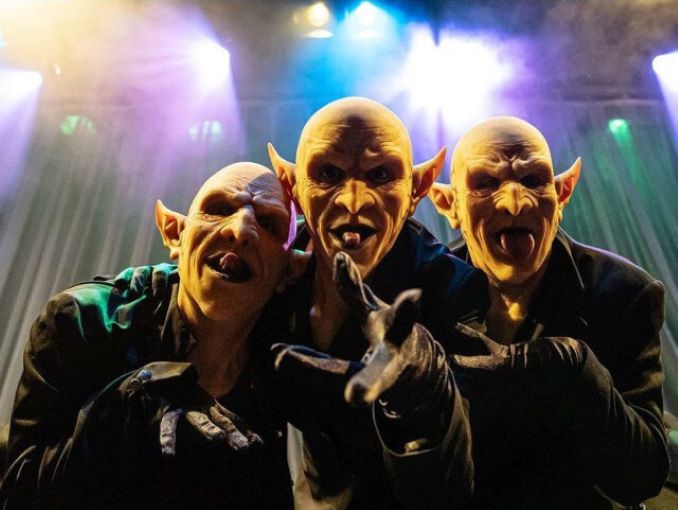When one sees a Shakespearean play, it’s not always the content that imprints onto an audience’s memory. It is often the concept or gimmick on top of the material that stays forefront in the mind. For instance, one might remember Measure for Measure set during the AIDS epidemic of the 1980s. One might recall a 5-person Twelfth Night set during the disco era of the 1970s. You get the idea. Goblin Macbeth presented by The Shakespeare Company and Hit & Myth Productions somehow manages to intertwine two novel conceits onto Shakespeare’s darkest tragedy. This is a play whereby goblins discover a Complete Works of William Shakespeare and decide to perform their favourite play before the audience. This is the first conceit. The second conceit flips one of Shakespeare’s most famous gimmicks entirely on its head. This isn’t a play within a play. This is a play outside of a play.

Let me explain. As the audience awaits entrance into the Studio at the Vertigo Theatre, they are joined by three talkative and curious goblins. The goblins bring the waiting audience into the theatre. Soon various spectators are persuaded into helping these goblins set the stage. Macbeth will be the play within the play that occurs in the background. The foregrounded conflict lies between the goblins who argue about rhyming couplets, J.R.R. Tolkien, and even more topical subjects like Alberta beef. In addition, there’s the subplot conflict with Lyall Jovie, the lighting designer who is cajoled and threatened into assisting them for their impromptu performance.
Goblin Macbeth begets a tone that is one-part vaudeville, one-part improvisational comedy, and two-part horror/fantasy. One might think that this witch’s brew of differing genres might make the piece feel unbalanced. Not at all. These goblins, this play, and these conceits all belong to the same world. Goblin Macbeth is an outlandishly fun and creative spectacle.

The performances by Rebecca Northan and Bruce Horak are wonderfully unique. Both actors show a wide range in the foregrounded comedy and then move seamlessly to the darker elements of Macbeth. The third goblin played by Ellis Lalonde creates a sound atmosphere that backs up the comedic and dramatic work that Northan and Horak engage in. The comic chemistry between all three is mesmerizing, and the way they break out of the plot of Macbeth with their vaudevillian shenanigans and back into it is deeply engaging. Of special interest is how good these actors are at getting audience members to participate in the story. Spectators read letters, make trumpet sounds, and even wave branches becoming the camouflaged forest of Macbeth’s Birnam Wood.
One of the play’s strengths ironically is one of its weaknesses, however. The design of the goblin masks is very high quality. In fact, they’re film quality, and for awhile they are a special kind of eye-candy for the audience. But what they gain for special effect, they limit in facial expression. There is some subtle dexterity around the mouths, but with so few actors playing so many characters, the loss of wide-ranging facial expression is meaningful.
It reminds one how important the malleability of an actor’s face is in the creation of a character. Because so much of the goblins’ thematic territory questions the meta idea of “pretend” and “theatre itself,” it seems unnecessary to have a mask constrict the very actor’s tool whereby pretend can exist in variation. One can imagine lighter makeup aiding the suspension of disbelief just fine. Luckily, Northan and Horak are quite versatile in their vocal range to differentiate their parts, but as one who knows Macbeth quite well, I did find myself at times wondering who was playing who.

Ultimately this is a small complaint in an otherwise gratifying night of theatre and there’s one moment that should leave Shakespeare lovers with something to think about: When the goblins argue about the pronunciation of a certain word, Horak’s character mumbles, “no wonder they are taking Shakespeare out of the curriculum.” It’s a line that gets a big belly laugh from the audience, but it’s full of irony. Many people came to this show for the goblins but left with a better education in Shakespeare. If that’s what it takes, I’m all for it.
***
Goblin Macbeth presented by The Shakespeare Company and Hit & Myth can be seen at the Studio through the Vertigo Theatre. It plays evenings and matinees through October 16th. *Mature Content Warning.




